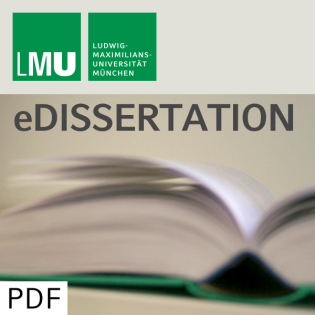
Non-linear massive gravity
Beschreibung
vor 11 Jahren
Massive gravity is a particular theoretical model that modifies
gravity on cosmological scales and therefore could provide a
dynamical explanation for the observed accelerated expansion of our
Universe. In this thesis we investigate various theoretical
problems of massive gravity, important for its consistency and
phenomenological viability. It is known that the predictions from
the linearized massive gravity contradict the predictions of
General Relativity. It is, however, an artifact due to the
breakdown of the perturbative expansion in the massless limit. In
our work we investigate this problem in the diffeomorphism
invariant formulation of massive gravity in which the graviton mass
term is written in terms of four scalar fields. We determine the
so-called Vainshtein scale below which the scalar modes of the
massive graviton enter the non-perturbative regime for a wide class
of non-linear mass terms. We find the asymptotic solutions of the
spherically symmetric gravitational field below and above the
Vainshtein radius, and show that massive gravity goes smoothly to
the General Relativity below this scale. We also determine the
corresponding corrections to the Newton potential. In general, any
non-linear extension of the quadratic graviton mass term propagates
the Boulware-Deser ghost. The only theory in which the ghost is not
propagating in the high energy decoupling limit, is the de
Rham-Gabadadze-Tolley theory. Here we show that the ghost arises in
the fourth order of perturbations in this theory away from the
decoupling limit. However, we further argue that the ghost can be
avoided in the full non-linear theory if not all four scalar fields
propagate independent degrees of freedom. In particular, we
investigate the simple example of (1+1)-dimensional massive gravity
and find that the theory exhibits a gauge symmetry, which reduces
the number of degrees of freedom. We also generalize the
diffeomorphism invariant formalism of massive gravity to arbitrary
curved backgrounds. We find that, given a specific background
metric, the resulting generally covariant massive gravity exhibits
an internal symmetry in the configuration space of the scalar
fields. The symmetry transformations of the scalar fields are given
by the isometries of the reference metric. In particular, we
investigate massive gravity on de Sitter space in this formalism.
We confirm the known result that, in the case when the graviton
mass is related to the cosmological constant as m^2=2\Lambda/3, the
theory is partially massless and propagates only four degrees of
freedom.
gravity on cosmological scales and therefore could provide a
dynamical explanation for the observed accelerated expansion of our
Universe. In this thesis we investigate various theoretical
problems of massive gravity, important for its consistency and
phenomenological viability. It is known that the predictions from
the linearized massive gravity contradict the predictions of
General Relativity. It is, however, an artifact due to the
breakdown of the perturbative expansion in the massless limit. In
our work we investigate this problem in the diffeomorphism
invariant formulation of massive gravity in which the graviton mass
term is written in terms of four scalar fields. We determine the
so-called Vainshtein scale below which the scalar modes of the
massive graviton enter the non-perturbative regime for a wide class
of non-linear mass terms. We find the asymptotic solutions of the
spherically symmetric gravitational field below and above the
Vainshtein radius, and show that massive gravity goes smoothly to
the General Relativity below this scale. We also determine the
corresponding corrections to the Newton potential. In general, any
non-linear extension of the quadratic graviton mass term propagates
the Boulware-Deser ghost. The only theory in which the ghost is not
propagating in the high energy decoupling limit, is the de
Rham-Gabadadze-Tolley theory. Here we show that the ghost arises in
the fourth order of perturbations in this theory away from the
decoupling limit. However, we further argue that the ghost can be
avoided in the full non-linear theory if not all four scalar fields
propagate independent degrees of freedom. In particular, we
investigate the simple example of (1+1)-dimensional massive gravity
and find that the theory exhibits a gauge symmetry, which reduces
the number of degrees of freedom. We also generalize the
diffeomorphism invariant formalism of massive gravity to arbitrary
curved backgrounds. We find that, given a specific background
metric, the resulting generally covariant massive gravity exhibits
an internal symmetry in the configuration space of the scalar
fields. The symmetry transformations of the scalar fields are given
by the isometries of the reference metric. In particular, we
investigate massive gravity on de Sitter space in this formalism.
We confirm the known result that, in the case when the graviton
mass is related to the cosmological constant as m^2=2\Lambda/3, the
theory is partially massless and propagates only four degrees of
freedom.
Weitere Episoden


vor 10 Jahren

vor 10 Jahren
In Podcasts werben






Kommentare (0)